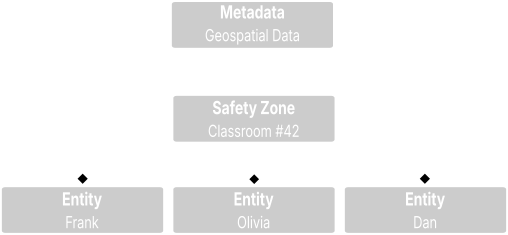Overview
The
Decentralized Emergency Management Protocol (DEMP)
introduces a digital, community-driven and decentralized approach
to handling emergencies. By empowering individuals and communities to respond immediately, either independently
or alongside emergency professionals, DEMP enables faster
collaborative decision-making, which can help save lives and resolve
crises more effectively. The protocol defines a network of safety
information systems, allowing citizens, private and public
organizations to trigger alerts, share real-time data and manage
incidents through authoritative or multi-party consensus. As an open
protocol, DEMP facilitates interoperability while offering
flexibility, scalability and security by design.
Architecture
The following component definitions provide a foundational understanding of how DEMP architecture enables
decentralized emergency management, real-time alerting and cooperation. This is a conceptual representation of
the protocol, intended for presentation purposes only. For detailed technical information and implementation
guidance, please refer to the DEMP Specification (DEMP-SPEC).
Network
A DEMP Network relies on a decentralized client-server model where Safety Information System
(SIS) nodes function as servers and Entity devices as clients. SIS nodes can operate independently or
federate, enabling server-to-server interactions. SIS owners may optionally add their nodes to a DEMP Network
Directory, a publicly accessible registry that facilitates discovery and interaction across communities.
Safety Information System
A Safety Information System (SIS) is a server
instance within a DEMP Network, functioning as a decentralized
node responsible for managing alerts, processing data and facilitating interactions between
Entities. SIS nodes are accessible through an entry point called a Hub, available as a public or private web
page. The Hub provides administrative details about the SIS, a list of its public Safety Zones and
instructions for Entities seeking to join.
Example of Safety Information System (SIS)
The campus community can access the SIS by visiting the Hub's web page. Through this
interface, they can opt-in to the available publicly accessible Safety Zones such as the Auditorium or
Library to stay informed and receive alerts specific to the zones they are in.
Safety Zone
A Safety Zone is a defined physical or virtual area
managed by a Safety Information System (SIS). It serves as an
operational boundary where alerts, safety information and coordination between Entities take place.
Example of Physical Safety Zone
Frank, Olivia and Dan have opted into the private Safety Zone of Classroom #42. As a
physical Safety Zone, it is associated with geospatial metadata that defines its location within the building.
In case of an emergency, this metadata can be used for indoor geolocation and to perform real-time situational
assessments.
Example of Virtual Safety Zone
Alice’s Friends Group is defined as a virtual Safety Zone. The entities within this
zone, Alice, Judy and Bob are individuals who have opted into the zone to receive information and alerts
related to each other's safety. As a virtual zone, it is not bound by a physical location but is instead
based on a logical grouping of participants.
Entities and Devices
An Entity represents any participant within a Safety Information System (SIS), including
individuals, organizations and autonomous agents. While an Entity itself is an abstraction, it interacts with
an SIS through one or more devices, each of which is connected to at least one Safety Zone. A
Device is any hardware or software component acting as a client within an SIS node. Devices
are categorized as either Active or Passive: Active Devices can share, receive and process data from
the SIS whereas Passive Devices can only share data with the SIS.
Example of Entities and Devices
The Entities include an Individual, an Organization and an Autonomous Agent, each
using different types of Devices categorized as either Active or Passive. Active Devices, such as
Smartphones and Software Components can send, receive and process data, while Passive Devices, such as
Sensors, Surveillance Cameras and Emergency Vehicles, can only transmit data to the SIS for further
processing.
Federation
A Federation refers to the voluntary interconnection of multiple
Safety Information System (SIS) nodes, allowing them to exchange
alerts, share safety information and coordinate emergency management while maintaining their autonomy.
Example of Federation
The Sun University Federation interconnects the Sun University Campus and Sun
University Hospital Safety Information Systems (SIS). These SIS nodes are further connected to the Sun
City Federation, which federates additional nodes, including the Sun Shopping Mall, the Sun Street
Neighborhood and the Sun Emergency Services SIS. The Sun Emergency Services SIS is also part of the State
Public Safety Federation, ensuring broader cooperation in emergency responses across multiple areas and
jurisdictions.
Alert
An Alert is a structured emergency message managed by a Safety Information System (SIS) to
notify, forward or escalate an emergency situation. Alerts may be triggered manually or automatically by an Entity based on predefined conditions. Depending on its scope and severity, an Alert can be
contained within a single Safety Zone (Zone Alert), circulate within all or selected Safety Zones
managed by the SIS (System Alert) or propagate across federated SIS nodes (Federated Alert).
Open Alert
An Open Alert is a special type of Alert that attempts to propagate beyond federated SIS
nodes in an effort to reach an entire DEMP Network. This mechanism enables emergency messages to spread
widely by leveraging decentralized network paths. However, further propagation depends on each reached SIS,
which may choose whether or not to process and forward the alert. Inspired by the Six Degrees of
Separation theory, the Open Alert mechanism operates on the principle that even distant SIS nodes can
potentially reach each other, increasing the likelihood of widespread alert propagation.
Security and Trust
Certified Entity
A Certified Entity is an Entity that has
successfully completed an administrative and technical identity
validation process, confirming its authenticity within an SIS.
Certified Safety Information System
A Certified Safety Information System (SIS) is an SIS that meets the highest established
security, operational and governance requirements.
Authoritative Entity
An Authoritative Entity refers to a Certified Entity
with elevated privileges within a DEMP Network. This role can be
granted to Entities such as emergency professionals, public
authorities or any legally agreed representative. Authoritative
Entities have the ability to override a Consensus Decision-Making.
Consensus Decision-Making
A Consensus Decision-Making refers to the
collaborative process used to update an Alert's status when no
Authoritative Entity is available to make a decision. In such cases,
consensus is reached through voting among Certified Entities.
Chain of Trust
The Chain of Trust is a cryptographic trust model that ensures
Entities within a Safety Information System (SIS) are legitimate and
mutually trusted. Entities must establish trust with the SIS and may
also establish trust with other participants to improve overall
security.

